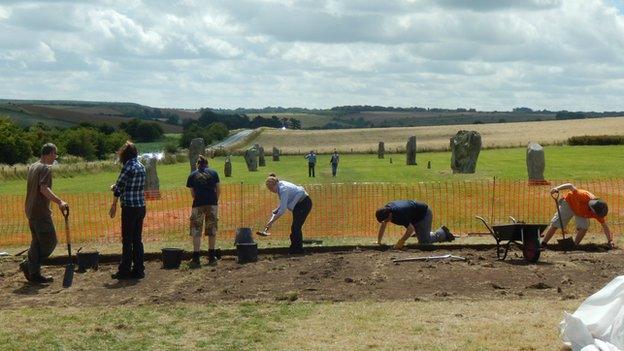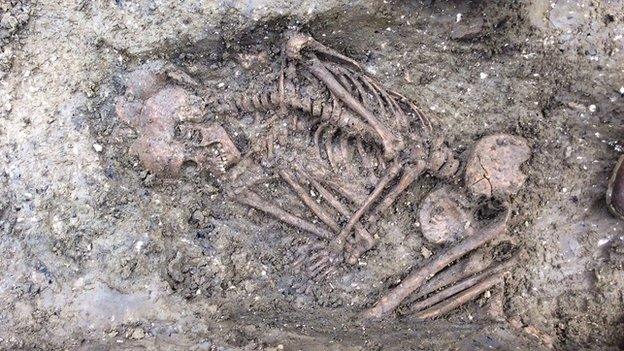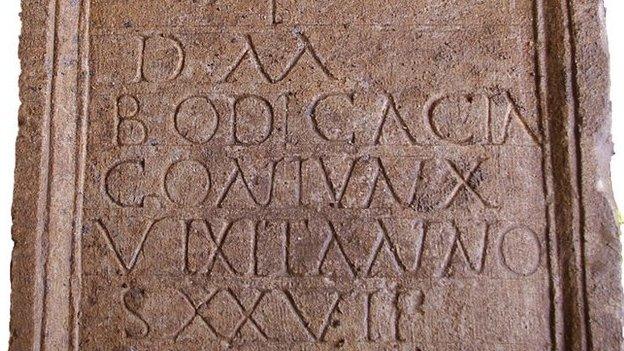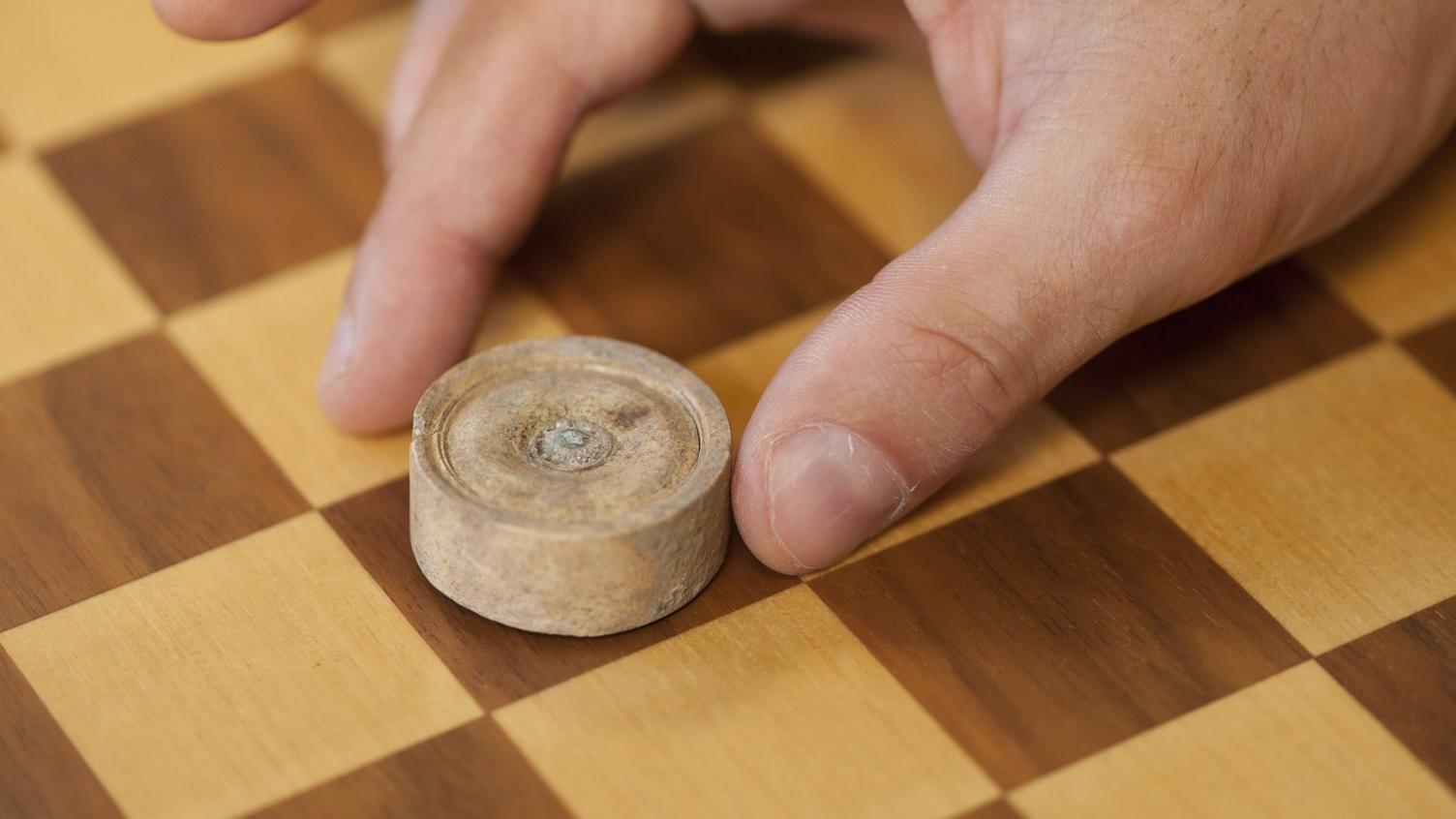Neolithic house discovery at Avebury stone circle dig
- Published

Archaeologists at the three-week Avebury dig are researching the daily lives of Neolithic and Bronze Age people
Archaeologists believe they may have found the remains of a house where people who built Avebury stone circle may have lived.
The three-week Between the Monuments project is researching the daily lives of Neolithic and Bronze Age residents at the Wiltshire site.
The dig is being led by The National Trust and Southampton and Leicester University archaeologists.
The National Trust said if it is a house they will have "hit the jackpot".
Spokeswoman Dr Nick Snashall said: "I could count the number of middle Neolithic houses that have been found on the fingers of one hand.
"This site dates from a time when people are just starting to build the earliest parts of Avebury's earthworks, so we could be looking at the home and workplace of the people who saw that happening."
'Quite astonishing'
The site being excavated is next to the West Kennet Avenue - a 1.5-mile (2.5km) prehistoric avenue of two parallel lines of stones - and was first discovered by archaeologist and businessman Alexander Keiller 80 years ago.
The team has spent three years researching his journals and drawings together with modern geophysical survey techniques to pinpoint the excavation area.
They have also discovered arrowheads, clusters of scrapers for working hide and plant materials, miniature flint saws and pottery.
Dr Snashall said: "It's quite astonishing, millions of people have visited this site over the years but few of them can have guessed what they were standing on.
"The finds have been coming up three or four at a time, in clusters. It's as if the people were sitting here working away making arrowheads, scraping skins and carrying out their daily tasks and then they just got up and walked away."
- Published23 July 2015

- Published23 May 2015

- Published12 May 2015

- Published22 November 2013
